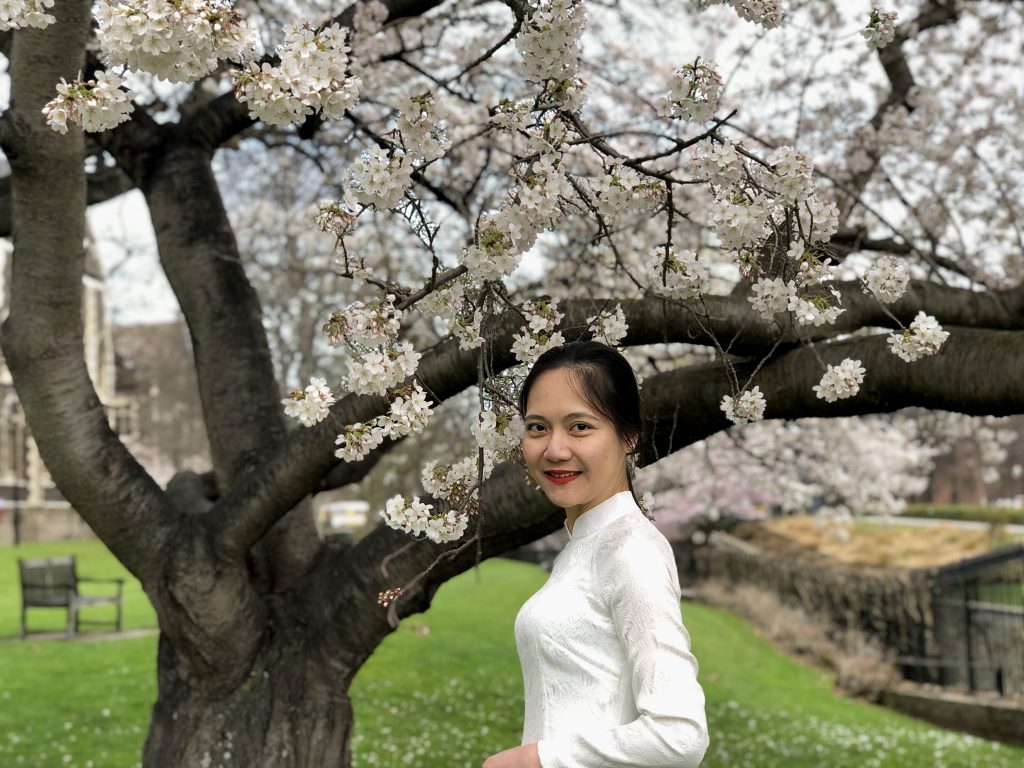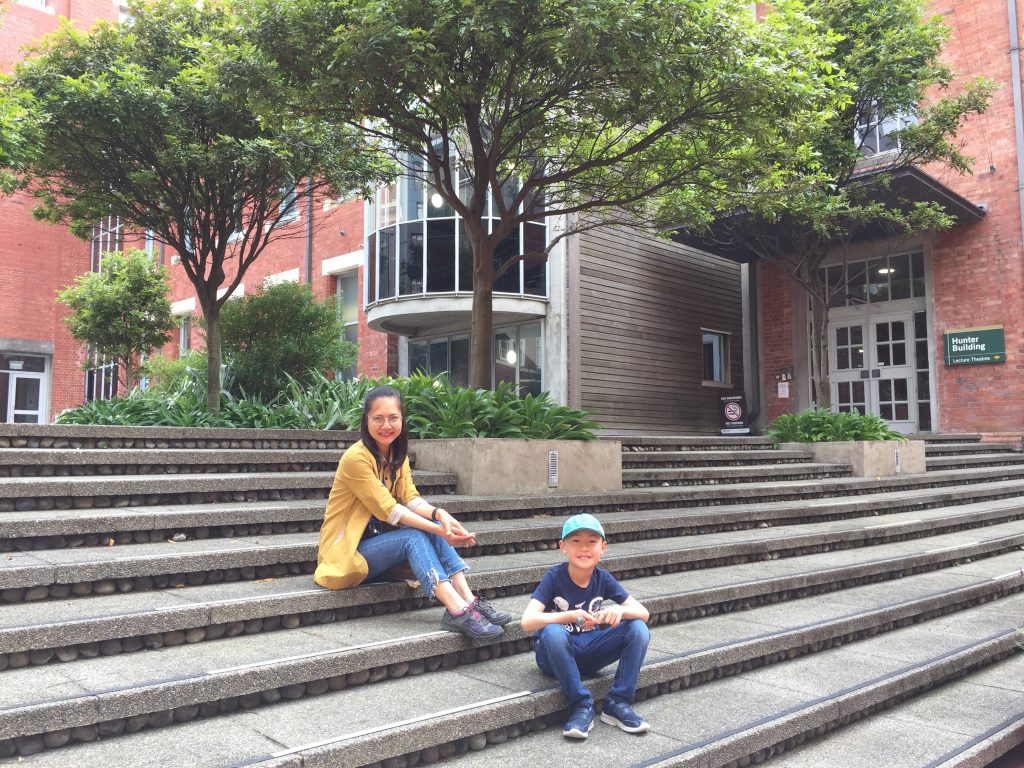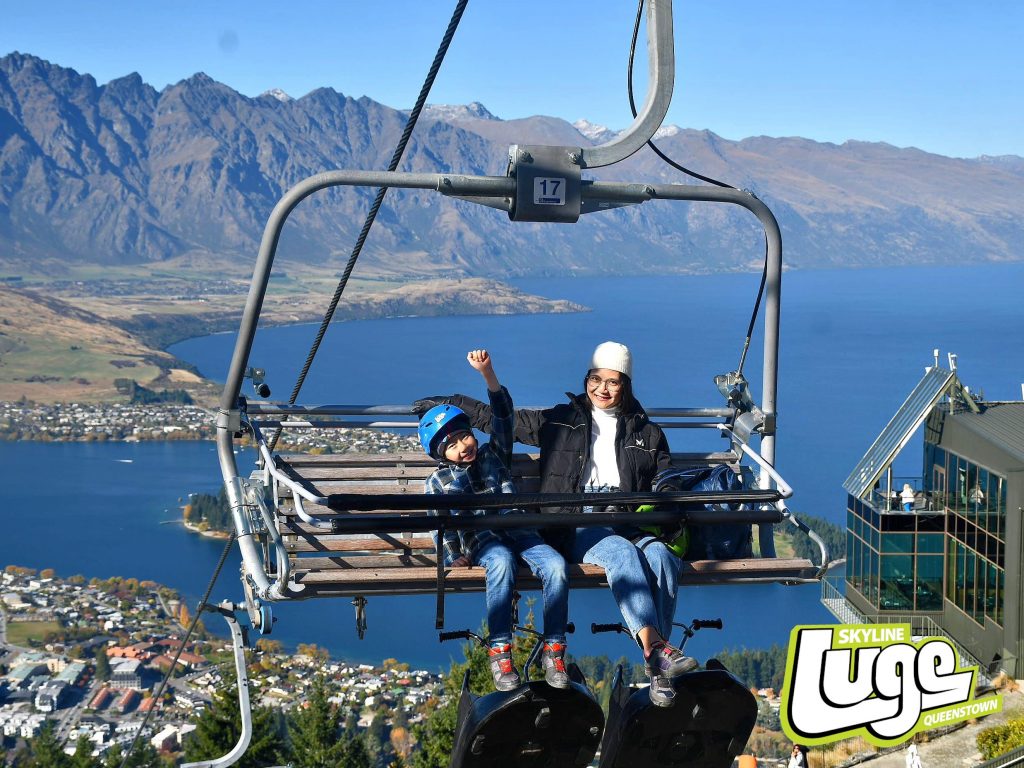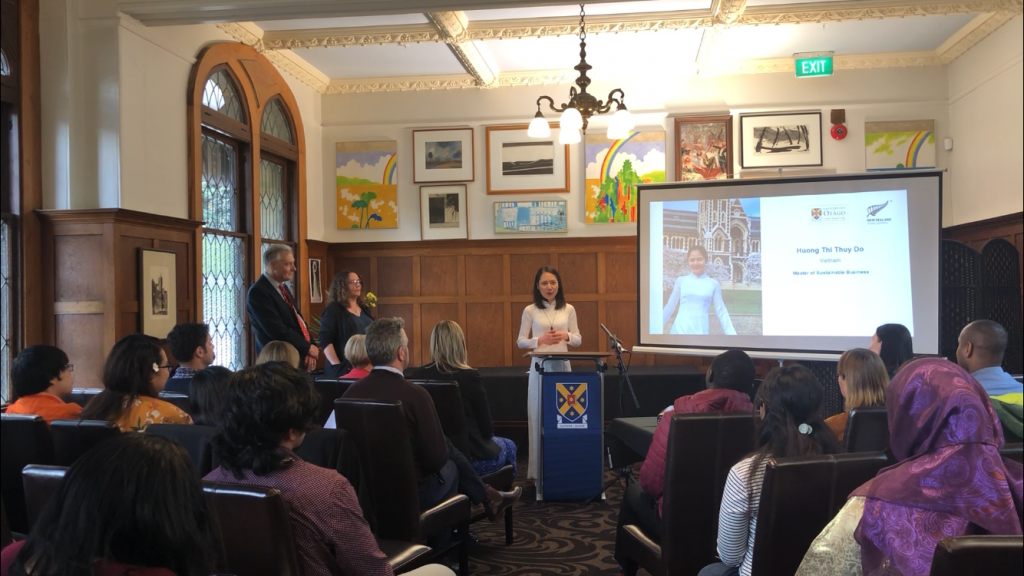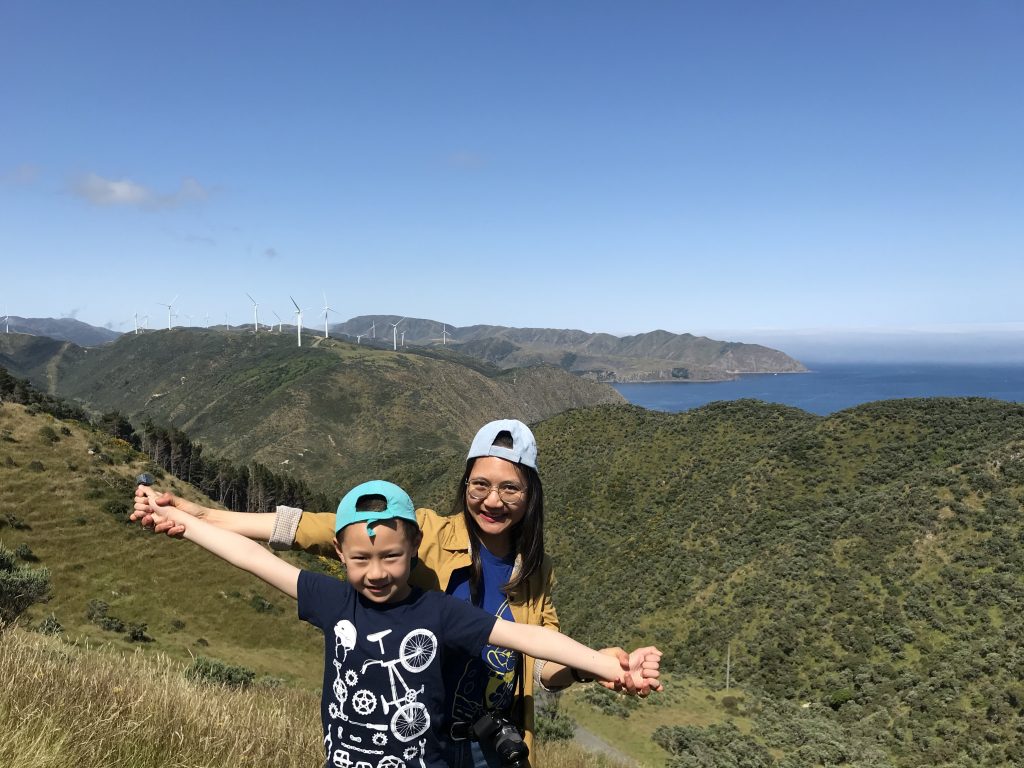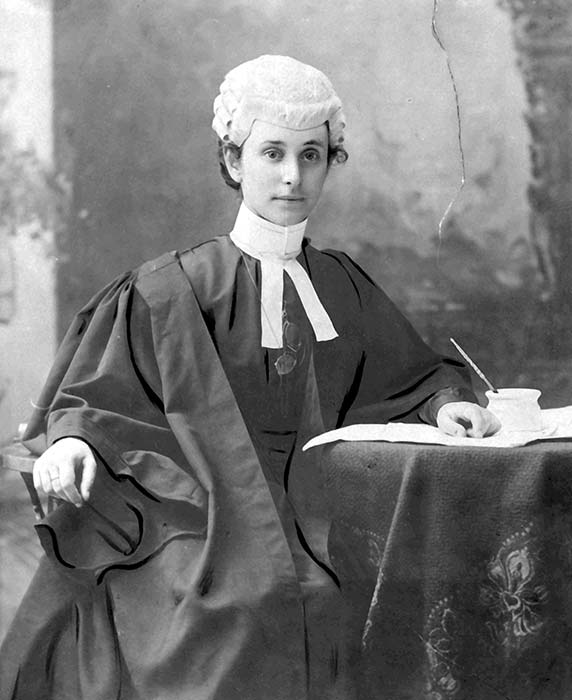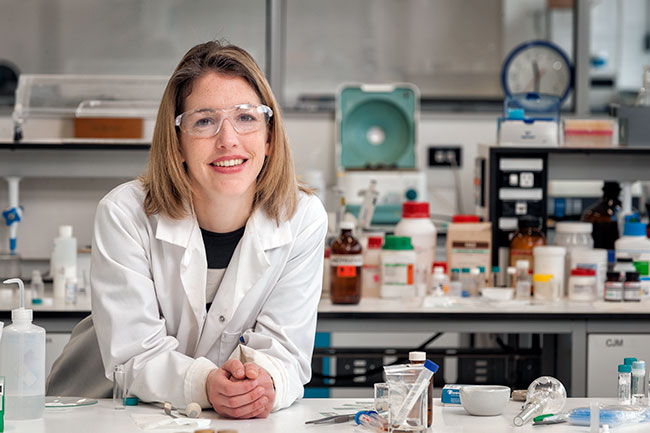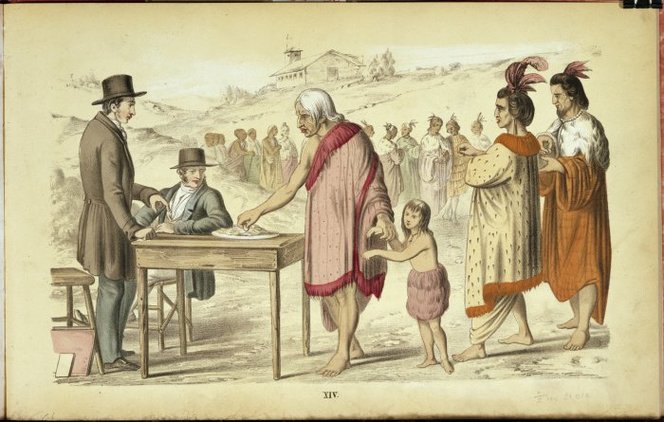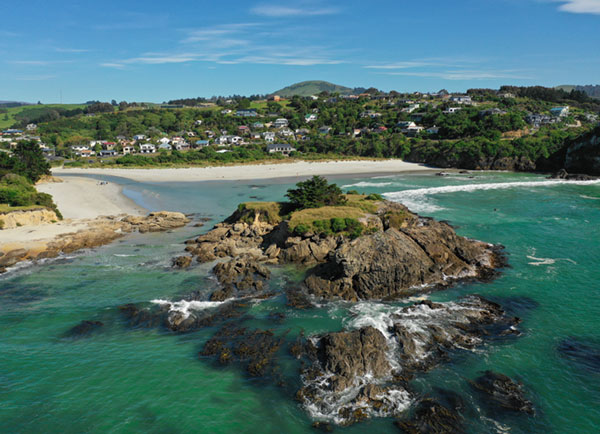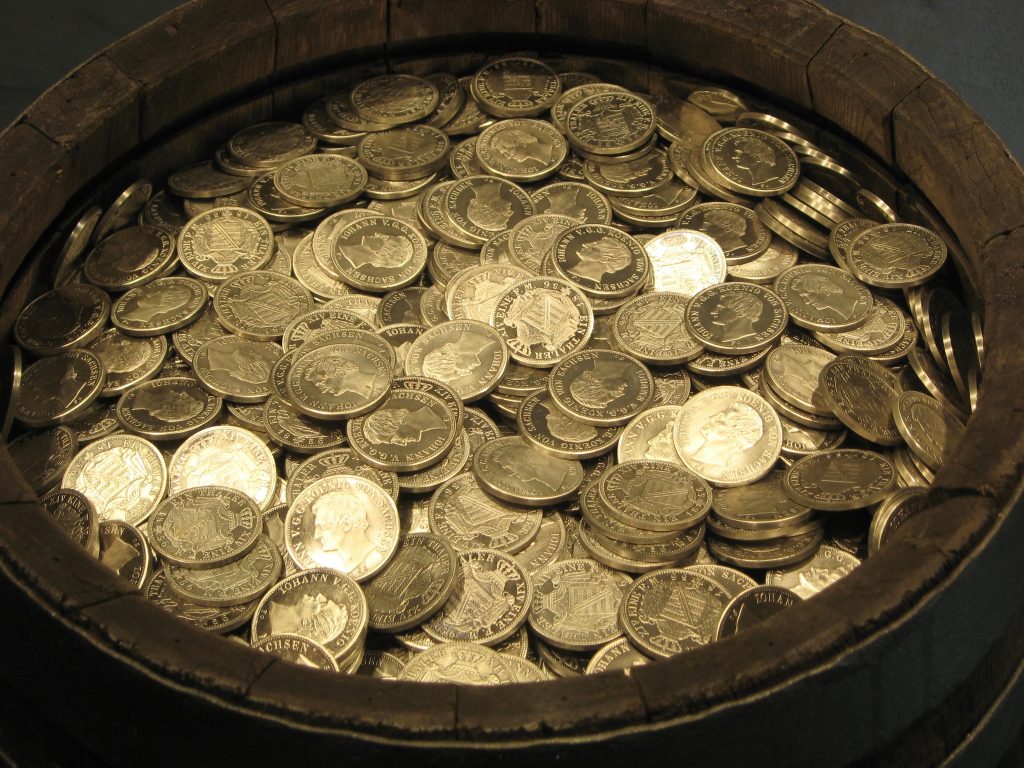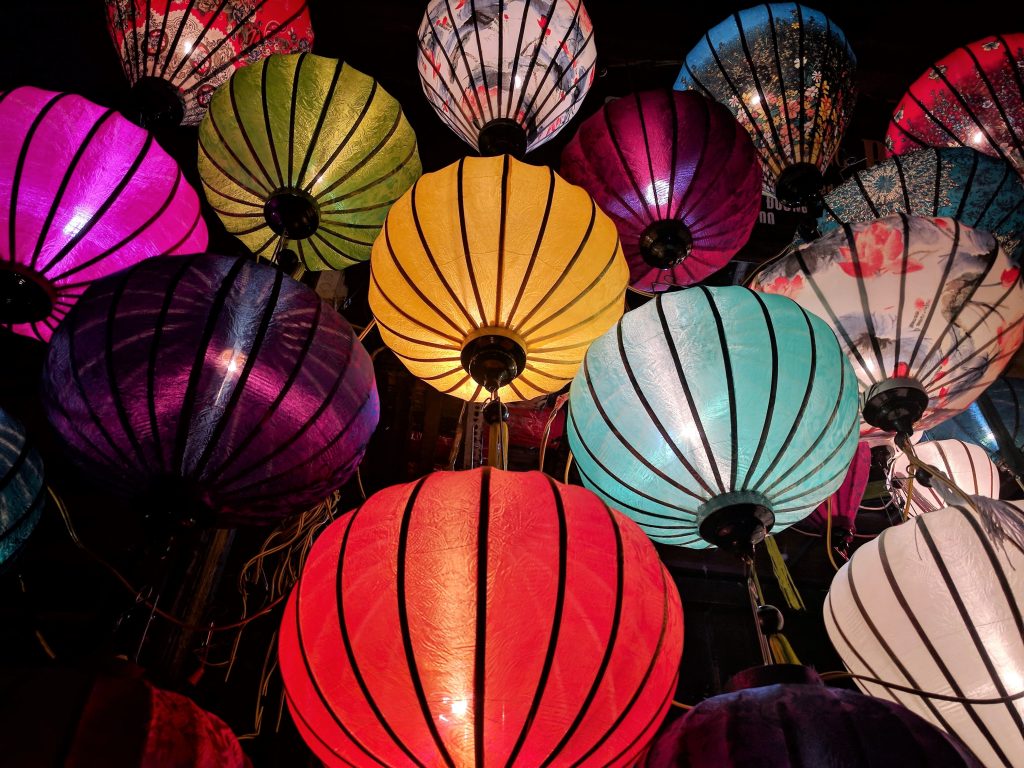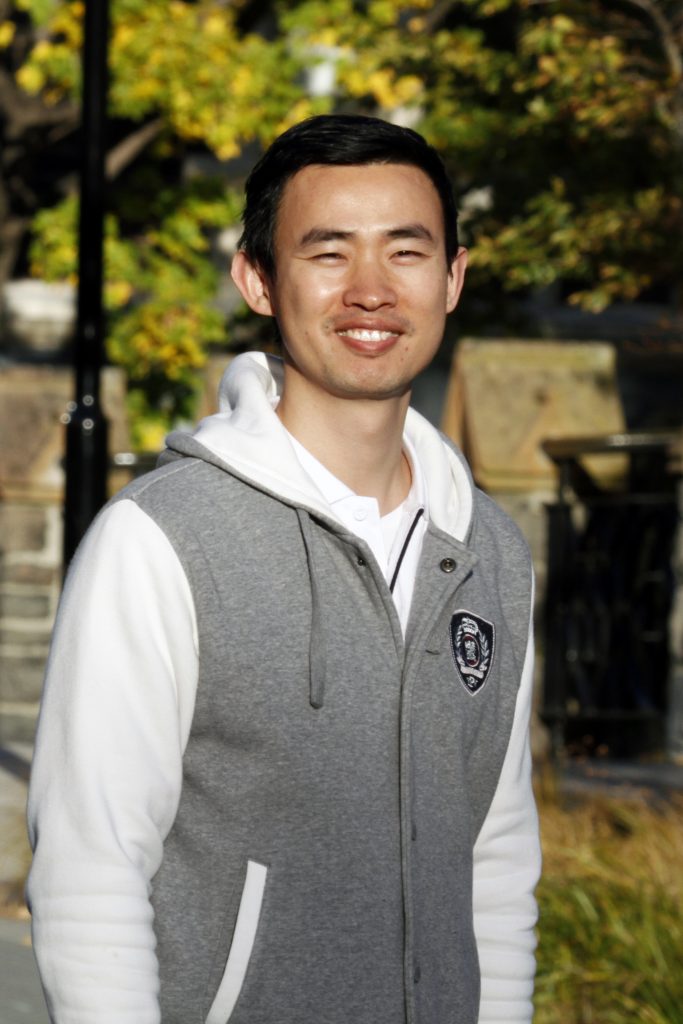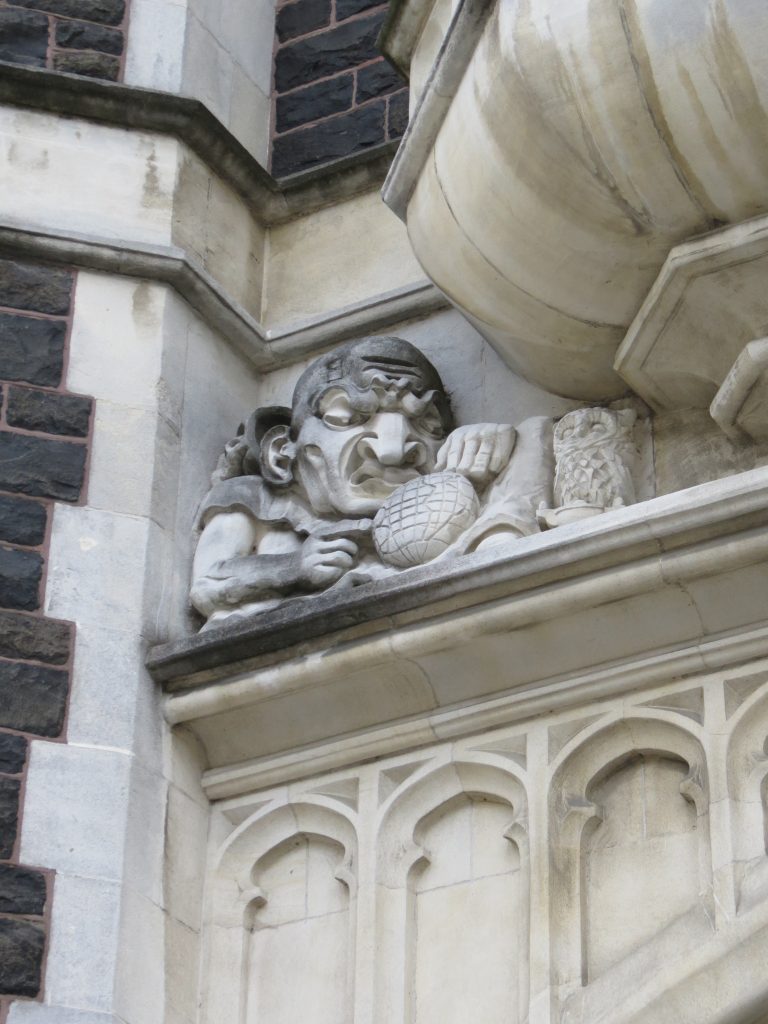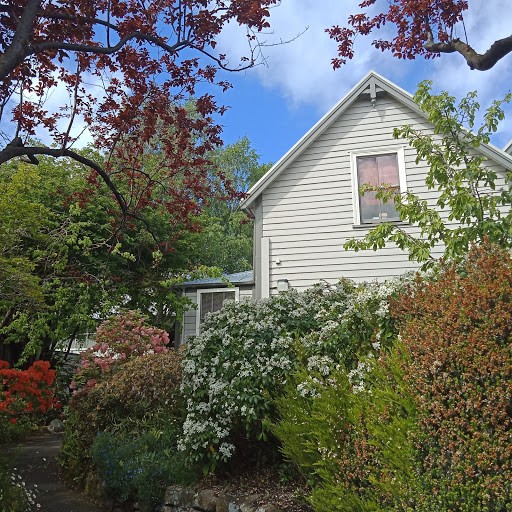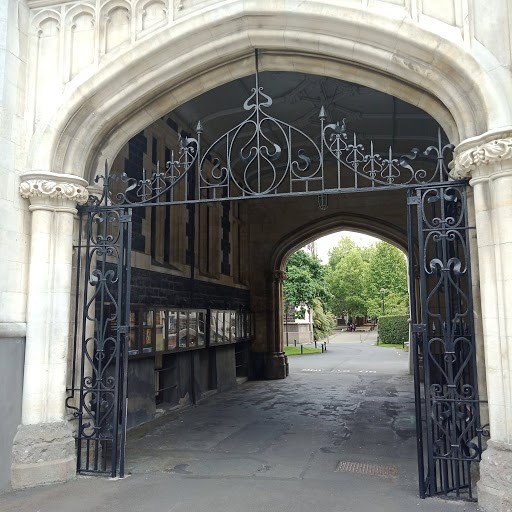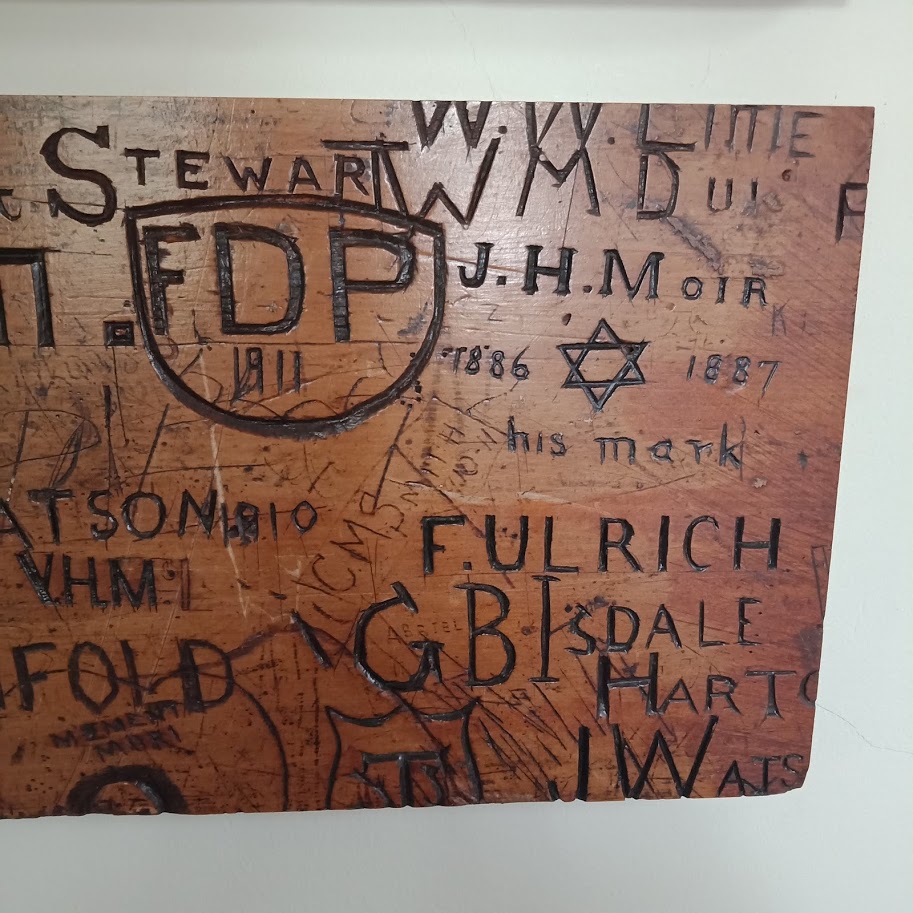Finding resilience, educational achievement and a sense of belonging amidst the COVID-19 pandemic.
NZ Scholarship recipient Huong Do (Vietnam) graduated with a Master of Sustainable Business (MSusBus) with Distinction from the University of Otago earlier this year. This is an achievement in itself, but add parenting; living far from home; working remotely; English as a second language and the COVID-19 pandemic. One of these ‘extra’ factors could have been enough to alter the course that Huong Do was on, but she continued on her journey and along the way discovered a sense of belonging, a resilience she did not know she had and educational and life skills that will improve not only her own life, but those that she comes in contact with in the future.
Question 1: Where did you first hear about the University of Otago? Why did you choose Otago over other universities in New Zealand and/ or the rest of the world?
On an autumn day in August 2018, when searching in vain for a course that was most relevant to my professional career as a Corporate Social Responsibility Specialist, I unexpectedly found the line “Master of Sustainable Business at the University of Otago, New Zealand” – this was the first-time I had heard of the University of Otago. I chose the University of Otago over other universities and the rest of the world because they suited my educational needs the most and I was very interested in the course offered. I also declined one offer from the University of Waikato (my second preference for NZ Government Scholarship) and the University of Auckland (for ADB-Japan Scholarship Program). I had a feeling of “belonging” when I read about Otago and the selected course’s description was exactly what I had been looking for.
Question 2: How long did you study at Otago? Did anything about life at Otago surprise you?
I spent 13 months completing the MSusBus at the University of Otago from Feb 2020 to the end of Feb 2021. Due to the complexity of the Covid-19 situation however, my stay in Dunedin was extended till mid of May 2021.
Prior to my departure from home, many friends told me that it was going to be extremely challenging with an intensive one-year studying schedule; a remote working position; being a full-time mother and in such a strange city in a land far away from my home country. But I proved myself in overcoming these potential challenges and being open to new experiences. What surprised me most was not the incredible beauty of the city, the food of a western country, the cold weather of the South Island, or the intensiveness of the coursework, but the people. I prepared myself to meet new people with different characteristics, mindsets, and lifestyles. I kept reading about Kiwi’s friendliness and kindness, but it turned out to be beyond my expectations. From my first day at Otago and over the course of my time there I never felt like I was treated as a stranger – I was welcomed and encouraged by both the University and residential communities. I felt happy every time I walked along the street and received greetings from people who I did not know. The kindness of Dunedinites gave me feelings of warmth and acceptance enabling me to feel secure, even when it times were tough.
Question 3: How did you find the learning/teaching environment at Otago? How is it different to what you have experienced at your previous university (either at home or in another country)? What was your experience with your lecturers/ supervisors like? How was your experience with other Otago staff and people (besides your lecturers/ supervisors)?
I found the learning environment at Otago extraordinarily rich and positive. As a post-graduate student engaging with a small number of classmates and lecturers, I had a precious opportunity to observe and gain insights about the learning environment. Firstly, the program is designed and launched in a student-centred manner. The lecturers did not solely lead us – we could participate and even design the way the knowledge was delivered rather than just having to memorise it. It was my great honour to learn from experienced and wonderful lecturers who all promoted the important role of creativity and critical thinking engaging all students in exploring ideas and issues, challenging traditional assumptions and handling complexity. COVID-19 restriction measures meant we couldn’t continue in the classroom but our lecturers and the University in general quickly responded and adopted many new methods to engage and continue with our learning.
I really would like to highlight the resourceful nature of the lecturers at Otago. They kept their minds open, valued diverse kinds of students all with differing ages, professional and cultural backgrounds. Coming from a developing country and using English as a second language meant that in the early days I was very concerned and anxious that I would fall behind. This feeling did not last as my thoughts, opinions and ideas were all respected and encouraged by the lecturers. As a result, I could identify my place in the class and gain the confidence to work on my ideas.
Otago has an exemplary learning and teaching environment. Academic and applied/ practical knowledge, skills, motivation, and the mental health of students were all positively taken care of.
Aside from my lecturers and supervisor, my main engagement with other Otago people was mainly around International Student Advisors, Ask Otago, and cafeteria staff. Typing these lines reminds me of all the grateful memories I have. During the hard time of isolation due to COVID-19 restrictions, the cold of winter or the pressure during the thesis writing period, I was not far from the warmth of emails, smiles and greetings from them all.
Question 4: While studying at Otago, what were other activities that you engaged/ experienced (Part time job? Travelling? Volunteering? Tutoring? Etc). Please share with us any thoughts/observations that you gained from these experiences.
2020 was a special year for every person living, working, and studying in New Zealand. Due to the impacts of the COVID-19 pandemic many people could not fulfil goals and objectives. But thanks to the safe and effective measures put in place to control the situation in New Zealand, I felt still luckier than many students and citizens in other countries. While studying at Otago, other than spending most of my time completing my studies I was still able to handle a job in Vietnam, travel around, learn new knowledge and skills as well as engage in some light volunteer work.
As a student enrolling in the Master of Sustainable Business I always found the relevant opportunities to enhance and apply my knowledge of sustainable development. By maintaining my job as a Senior Compliance/ Sustainability Officer I could create links between the theories, frameworks, models, methods, case studies and my real work with my employer . At the same time, I could turn my occupational experiences into valuable input and examples for the classroom.
Regarding travel, trips end but memories stay forever. Although I could not travel alot due to the limitation of time and effects of the pandemic, I was inspired by the New Zealand tourism industry. Among a variety of destinations, Queenstown and Auckland were my son’s and my favourite places. While Queenstown reminded me of a small but famous tourist oriented town in my home country, the vibrant and crowded Auckland attracted my son. No matter how far and long our trips were, we both felt the beauty of NZ’s landscape and the warmth and friendliness from the people we met.
Over summer I had opportunities to attend cooking and bread making classes, as well as learning how to compost in our flat/ house/ office with the ‘Summer at Otago’ program. Volunteer work at the Community Garden also brought me new experiences. I was grateful to take part in these programs and activities as they all related to my interests. They not only made my stay in Otago more memorable but also equipped me with insights and knowledge which I can apply when I returned home.
Question 5: Overall, how did you find the ‘culture’ of the students, staff, and people that work at the University of Otago?
From my perspective, everyone studying, working, and serving at the University of Otago successfully shapes its uniquely diverse and consistent culture. I was impressed reading about the University’s history and was amazed upon my arrival at the campus on the first day. The atmosphere around the campus was extraordinary – relaxed and comfortable yet the spirit of people was very strong, focused, and positive. As the oldest university in the NZ Otago’s culture was rich with traditional values, but the modern aspects of the University are applied and promoted by students and staff. I read about the University’s four core values, and I observed these values were present in the students and staff I met. The respect, integrity, curiosity, and community values were reflected through the words and actions of the people I encountered, no matter what level of management, where they were from, what they were studying – all were working to contribute to the development and success of the University.
Question 6: What were the standout features of living and studying at Otago?
I personally love Otago as it suits my ideal for living and studying so much. Dunedin is a smaller and less populated city than my home city, it is not as crowded or noisy. It is peaceful yet convenient so a student can focus on studying while at the same time enjoy the beauty of nature and people.
Question 7: Overall, did Otago Uni meet your expectations? Tell us why or why not?
The University of Otago completely met my expectations. The fear of not finding a feeling of “belonging” prior to my arrival well and truly abated during my time here. Although I lived far away from home, the University of Otago and Dunedin became my second home and I felt fulfilled both academically and socially. It was not only about the academic quality, but Otago also widened my graduate employability as I gained knowledge for interpersonal and conceptual skills, strategic planning, and independent judgement. Furthermore, Otago will always stay in my mind for its beauty – magnolia blooms, cherry blossoms, moody clouds and sustaining rain, I felt such pride being in one of the world’s most beautiful campuses. I also appreciated the communication given – even during the tough times of Covid-19, I could see the quick responses, firm decisions, clear and positive communication from the University management and staff. This helped me to better plan, stay strong, and be positive that together we would overcome the hardship.
I still remember at the end of NZAID scholars’ integration week, Associate Professor Vivienne Anderson let us write a letter to ourselves in the near future, to describe our expectations and desires while we were at Otago. When my journey was nearing its end I had the chance to meet her and other scholars, where I received the letter I had written upon the start of my journey. I felt amazed. I had a good performance in my learning, become acquainted with study and the lifestyle of Otago. I also spent precious moments with my companion, teaching him and learning from him at the same time.
When you’re back home:
Question 8: How would you describe the University of Otago to somebody who was thinking of studying as an international student at Otago?
When thinking of studying as an international student at the University of Otago, I am sure that you have searched and read a lot of valuable information posted on the University’s website and other trusted sources. I hope this advice is helpful to you – you can trust what you read and heard about Otago as it is true. Follow your heart as it can lead you to an incredible place. Finally, do not hesitate to challenge yourself at Otago – you will have one of the most wonderful times in your life there.
Question 9: What is the best memory you will take home with you from your time at the University of Otago?
Every moment at Otago is memorable and beautifully captured through my camera and my memory. I also have my companion reminding me of many events that happened during the time we spent at Otago together. However, if it is a must to choose the best memory, I will talk about the Scholarship Completion Ceremony held last October. During 2020 many classes were transferred to an online platform, many events were virtually hosted, and a lot of ceremonies were affected or cancelled due to the outbreak of the COVID-19 pandemic. However, the Completion Ceremony was successfully organised just one day after my very last class of the final semester – an important milestone for our journey. Thanks to the NZ Government, MFAT and the University of Otago I travelled so far to pursue my dream. The ceremony then gave me an official opportunity to present my gratitude to them and my loved ones even though they could not attend in person. Being the only Vietnamese scholar and wearing our traditional costume at the ceremony, I could not hide my tears and mixed feelings. I was extremely happy and fulfilled for doing well in my classes, but I was also sad at the same time as the time to say goodbye to Otago was coming. The event also gave me a precious opportunity to meet other scholars and congratulate them on their amazing achievements.
Question 10: How do you apply the study & experience you received here to your current work? Has your experience of studying at Otago had a positive impact on your life now, at home? If you take a look at yourself before and after going to NZ, what is the biggest change that you notice?
Since I mentioned above (Question 4) about my application of knowledge into the work and vice versa during the course, it should be noted that I did not need to wait till the end of my study and return. It meant a lot to me and my employer as my academic experience became more practical, and applied. My study at Otago has levelled up my understanding and skills on research, I was terrified about research before, but Otago positively changed that so that I could better handle my work.
My experience of studying at Otago is positively impacting my life back in my home country – like many overseas students studying abroad, I learnt how to better manage my daily routine, overcome challenges, and explore new aspects of myself. I had always assumed that it was too difficult to achieve work-life balance no matter how hard I tried – but looking at myself now, I am proud to have gained positive results from working, studying, and enriching my personal life.
The biggest change that I have noticed since studying at the University of Otago is the concept of the word resilience. I paid attention to this term when my classmates and I discussed climate adaptation and mitigation during the class of “Developments in Environmental Management” and I have been thinking about it ever since then. I then came to realise how I felt/behaved when I was when coping with changes or difficulties – since my time at Otago my anxiety lessened and I felt more calm and confident. I concluded this in my speech given at the Completion Ceremony with a thanks to all for helping me to become a better person who is more and more resilient day by day.
Nicky Richardson is an International Marketing Coordinator at the University of Otago. With degrees in music and marketing, both from Otago, she is passionate about education, and the places it can take you.
International Women’s Day – a look at the past, present and future of women at Otago.
International Women’s Day, the mere idea of this notion would have been considered ridiculous 150 years ago during the early days of Otago University. I think it is important on a day like today for everybody – men and women, to remember the women that came before. The women that literally paved the way for the women of today, and opened up doors that had been closed shut and bolted to women for time immortal. Today’s blog focuses on just a couple of these remarkable women (there are so many to mention), from the past, the present and is a reminder for the future that whilst we are still not yet on an equal playing field, much has been done and the collective attitudes of men and women including perceptions and behaviour can make a difference to future generations.
Caroline Freeman
You just cannot go past a discussion on International Women’s Day at the University of Otago without mentioning Caroline Freeman. In 1878 Caroline Freeman became the first matriculated woman to enrol at the University of Otago. At this time she lived in Green Island, which in those days required her to walk 11 kilometres after lectures in a long dress, through muddy wet tracks. Her health suffered as a result and she was forced to find accommodation in Dunedin. Her academic environment also proved to be hostile with Professor of Classics G.S. Sale, known to be a ‘veritable ogre’ to female students. A staff member once commented that had Freeman been a fighting man, rather an a studious woman, she would have been merited for her ‘pluck and perserverance.’ Caroline Freeman graduated in 1885, to a large applause with flowers thrown across the stage, and by the time of her capping 11 more women were enrolled at the university at different levels. Recognition of her courage, perserverance and passion for education was highlighted when the University of Otago named one of their residential colleges after her – Caroline Freeman College.
Emily Siedeberg
Next up on our list of those who paved the way is Emily Hancock Siedeberg. From an early age her father believed she should train as a doctor, she accepted this and the pair went through the process of enrolling her. Although the university council had already decided that medical training should be open to both women and men, her decision was certainly not celebrated – some showed enthusiasm while others were openly hostile. The dean of the Otago Medical School Dr John Scott was reluctant, but alongside other staff accepted the university’s decision so that in April 1891 Emily became a medical student, graduating in 1896 as New Zealand’s first woman medical graduate. During her time as a student she was told not to show her feelings, to keep men at a distance and not be frivolous. She went on to complete a BSc, and did postgraduate work in obstetrics, gynaecology and children’s diseases. In 1898 with considerable financial support from her father she registered as a medical practioner and set up private practice in Dunedin, which she maintained for the next 30 years.
Ethel Benjamin
Ethel Benjamin was New Zealand’s first woman lawyer – and we have to mention here that the University of Otago was the first university in Australasia to permit women to pursue a law degree – I don’t know about you, but permit? Seriously? It seems crazy now. This really shows how much these women had to fight for what is taken as a given today. Benjamin graduated with an Bachelor of Laws (LLB) in July 1897, and at her graduation she made the official reply on behalf of the graduands. This was the first time a current graduand rather than a past graduate had made the speech, and it was also the first occasion any woman had made an official speech at the university.
However the Otago District Law Society did not take kindly to a woman entering their male dominated profession. Discrimation against her included restricted access to the society’s library, an attempt to propose an alternative dress code to the wig and gown, her complete exclusion from annual bar dinners and whereas young members were usually offered support, she received little.
Vice Chancellor of the University of Otago – Professor Harlene Hayne
It is 2019 and the year that the university celebrates 150 years of education and achievement. When it comes to talking about present women at the University of Otago we cannot go past the fact that the Vice-Chancellor of our university is a woman. Effectively she is at the top of the food chain here, well above my rank and station, so I decided that Professor Hayne could probably address her own thoughts on International Women’s Day herself, in her own words, this excerpt was taken from the VC’s Comment – Issue 42. of the Otago Magazine:
Since my appointment as Vice-Chancellor in 2011, much has been made about my gender. I was the first woman to lead the Psychology Department at the University of Otago and the first woman to become a Deputy Vice-Chancellor. I am the first woman to be the Vice-Chancellor at the University of Otago and only the second woman to become a Vice-Chancellor in New Zealand.
Every time the issue of my gender is raised, however, it takes me by surprise. In the course of my own academic career, my gender has never been an issue. I have never felt that people have expected less of me because I am a woman, and I never felt that a glass ceiling prevented me from pursuing my goals and aspirations.
When I was growing up, my father used to tell me that girls could do anything. At Otago, I have certainly found that to be true. In this way, my own career has been remarkably gender blind.
But I recognise that the privilege of gender blindness is due, in part, to the historical period in which I live and to the places in which I have been lucky enough to grow up, study and work. I know too that I owe a huge debt of gratitude to those women who came before me.
As a university, we have a very proud history when it comes to women.
Dr Carla Meledandri
Dr Carla Meledandri from the Department of Chemistry is an expert in nanoscience, the world’s smallest particles, working at a scale of billionths of a metre. But don’t be fooled by her tiny content, she and her colleagues are looking to tackle the world’s largest problems – ranging from dental decay to climate change.
“Pushing the boundaries of fundamental research is vital – taking what we have found and applying it to solve problems follows on.”
Her expertise in nanoscience, working at a scale of billionths of a metre, helped win her the 2017 Prime Minister’s MacDiarmid Emerging Scientist Prize, the latest in a series of research awards.
Interdisciplinary collaborations with the Faculty of Dentistry have enabled the development of new materials designed to treat some of the causes of oral disease rather than the symptoms, hopefully leading to reduced costs and improving health worldwide.
The Future?
What about the women of the future? The young women like the ones pictured above who are exploring the world, educating themselves and finding out what makes them tick? Well, their future (and those of us who are somewhat further down the life journey) is down to all of us, men and women. We must learn from the past – celebrate success, challenge stereotypes, support each other, don’t accept pay inequality and not settle for anything less than our male counterparts, and that takes all of us. It’s all about balance. Happy International Women’s Day!
Special note to Te Ara – the Encyclopaedia of New Zealand for much of the historical content.
Waitangi Day – a very brief history……
Since 1947, February the 6th has been known as ‘Waitangi Day’ a nationally recognised holiday in New Zealand – a day for relaxing, enjoying the warm summer sun, and a day off work for some. But what is this public holiday all about? What is Waitangi Day, and what is the history? Today’s blog gives a very, VERY brief and layman’s outline of the background to the Treaty of Waitangi and the subsequent years since it was signed. Many thanks to Mark Brunton from the Office of Māori Development for providing the background to this blog by way of professional development courses held at the University of Otago.
Maori – the indigenous people of New Zealand
Captain James Cook, the man attributed to discovering New Zealand in 1769 was not in fact the first person to discover New Zealand at all. Maori are the indigenous people of our land, who had their own functioning society and structures prior to European arrival, but for how long Maori people had been living and thriving in New Zealand is a matter of debate – current understanding is that the first arrivals came from East Polynesia in the late 13th century. It was not until 1642 that Europeans became aware the country existed, and in 1769 that Cook mapped an outline of New Zealand and word spread of the land of lush forests, seal colonies and a good location for more trading opportunities. 
The arrival of the European settlers
Since Cook ‘discovered’ New Zealand word spread and over the next 70 years a rapid succession of European settlers descended upon New Zealand. First the Whalers and Sealers in the 1790’s – whose interaction with Maori was peaceful, where both parties developed alliances – they would trade goods, marriages between Maori and European were not uncommon and an understanding of the different cultures and languages was recognised. In the early 1800’s New Zealand was a stopover and supply base, and one where trades in muskets and war was rife. By 1838 land speculators from Britain came to acquire land which brings us to 1840, the year of the signing of the Treaty of Waitangi.
The Treaty of Waitangi
The Treaty of Waitangi was enacted in 1840 between many, not all, Maori Chiefs and agents of the Queen at Waitangi in the Bay of Islands and across NZ. There were three articles and three principles that pertained to the Treaty and they were all supposed to operate simultaneously – Partnership, Protection and Participation. There was a Maori version and an English version. The intentions behind the English version was to protect Māori interests from the encroaching British settlement, provide for British settlement and maintain a government to maintain peace and order. The Māori version – the Queen’s main promises to Māori were to: provide a government while securing tribal rangatiratanga and Māori land ownership for as long as they wished to retain it. Over the course of the next 100+ years the Treaty of Waitangi and European settlement has been the source of war, repression, anger, and almost complete loss of the Māori culture, their land and way of life.
Key Perceptions
1856 – Dr Issac Featherston (Superintendent of Wellington)
“All we can do is smooth their dying pillow then history will having nothing to reproach us for.”
1859 – Te HeuHeu (Paramount Chief)
“As the clover killed the fern, and as the European dog the Māori dog, as the Māori rat was destroyed by the Pākehā rat, so our people will gradually be supplanted by the Pākehā.”
1859 – Mr F D Fenton (Observations on the state of the Aboriginal inhabitants of New Zealand)
“Predicted that by 1928, there would only be 19,041 Māori people left; and that by 1990, not a single Māori person would surive.”
Māori Protest/Government Redress
Thousands of Maori and supporters marched on Parliament on 13 October 1975 to publicise the continued loss of Māori land. Whina Cooper led the march (hīkoi) that set off from Te Hāpua in the Far North on 14 September. The marchers’ demand was that ‘Not one more acre of Maori land’ should be alienated. The hīkoi raised public and official awareness of Māori concerns.
1975 Waitangi Tribunal established
The Treaty of Waitangi Act established the Waitangi Tribunal as an ongoing commission of inquiry to hear Māori grievances against the Crown concerning breaches of the Treaty. The legislation limited the scope of inquiry to grievances occurring after 1975, and it empowered the Tribunal to make findings of fact and recommendations only, not binding determinations.
Protesters occupied Bastion Point (Takaparawhā) in Auckland in January 1977 after the government announced a housing development on former Ngāti Whātua reserve land. The land had been gradually reduced in size by compulsory acquisition, leaving the Ngāti Whātua ki Ōrākei tribal group holding less than 1 ha. Police evicted the occupiers after 506 days. Following a Waitangi Tribunal inquiry and recommendations, much of the land was returned to or vested with Ngāti Whātua.
There were also protests from 1978 about the use of Maori land at Raglan (Whāingaroa) for a golf course. The land was originally taken during the Second World War for a military airfield. It was not needed for this purpose, but instead of being returned to its former owners, part of the land was turned into a golf course in 1969. The land was eventually returned to Tainui Awhiro people.
Credit to nzhistory.govt.nz for the above timeline and to read more significant treaty timeline events.
Where to from here?
Whilst attending University of Otago professional development courses on Māori culture and the Treaty of Waitangi on offer (free) to all staff it is clear that yes, there has been much done to redress the wrongs of the past, but there is still a long way to go.
Thanks to the tireless work of many, the University of Otago has an Office of Māori Development. Te Reo is now rightfully recognised as one of the three official languages of New Zealand. The University of Otago has a Māori Strategic Framework and the number of Māori students at Otago is continually increasing due to the support both academically and personally that we have to offer. However you choose to spend your ‘Waitangi Day’ enjoy, and perhaps this information might just tempt you to learn a little more about the history, culture and status quo of the indigenous people of New Zealand.
Nicky Richardson is an International Marketing Coordinator at the University of Otago. With degrees in music and marketing, she is a recent graduate of Otago herself – she loves Otago so much she ended up getting a job here!
Dunedin Beaches – we don’t want to boast but…….
It’s funny that Dunedin, New Zealand shares it’s namesake with another city on the other side of the world, Dunedin, Florida. Dunedin Florida has quite a few similarities with ‘our’ Dunedin, including the name itself derived from the Scottish Gaelic name for Edinburgh. Both cities enjoy a rich Scottish heritage, beautiful parks, a vibrant city and educational opportunities, but I bet you didn’t think that beaches would be one of them? That’s right, today’s blog is all about Dunedin NZ’s beaches, what they’re like, where they are and we don’t mean to boast, but………they are many and varied and just down right awesome.
The big picture
We’ve used this aerial shot of Dunedin before, but let’s face it, it is absolutely amazing, so why not use it again? Also, it shows you just how close Dunedin is to the coastline and an array of beaches. You can’t see all of the coast line in this shot, but it gives you a pretty good indication. In Dunedin, all of our beaches are within approximately a 30 minute drive of the Central City, some as close as 10 minutes away, and that’s where we’ll start with the closest and possibly most popular local beach.
St Clair Beach
St Clair Beach and Hot Salt Water Pool is literally on the doorstep for many Dunedin residents, and only a 10 minute bus or car ride from the Otago University campus. Not only is this beach blessed with beautiful soft, white sand, the mighty Pacific Ocean that stretches its long legs out from the beach offers surfing opportunities for both beginners and those that love to wet their feet on a regular basis. If you’re coming to Dunedin and you’ve never surfed before, get some surfing lessons from the locals and see what all the fuss is about. Or if you prefer a slower pace, take a stroll along the beach and end your walk at one of the many cafes, restaurants and bars that line our most popular of beaches.
Aramoana Beach
Aramoana translates from Maori to English as ‘sea pathway’ and this beach at the mouth of the Otago harbour was probably one of the very first beaches that the European settlers to Otago would have viewed. Aramoana beach is situated next to a quiet little township that has an array of permanent homes and kiwi baches. It, like St Clair is a surfing destination, but it also attracts (as most of Dunedin’s beaches do) a range of wildlife that comes ashore and on that note it’s really important that you don’t go near any wildlife you see. Follow these guidelines on how to behave around our precious and often rare and endangered wildlife taonga – keep your distance, don’t engage, keep your dog (and children) under control and keep noise to a minimum.
Brighton Beach
20km’s South West of Dunedin you’ll find a delightful little seaside town called Brighton. Again, this beach is popular for surfers and the community around the beach very much embrace a relaxed and easy going lifestyle.
You can hire a boat from the Brighton motorcamp to paddle up and down the stream, at low tide Barney’s Island (at the South end of the beach) is a wonderful place to explore, and you’ll often find families with small children making the most of these peaceful waters.
Surf lifesaving patrols are on duty during the busy summer months and rumour has it that there is a fairly impressive little cafe out there to add to your enjoyment.
Tunnel Beach
Tunnel Beach is named because of the fact that a man-made tunnel has been carved through the rock in the 1870’s which leads to a sheltered and private beach. There are many rumours and local legends as to why John Cargill carved this remarkable walkway, including the drowning of one or more of his daughters, or the fact that he wanted to provide his daughters’ with a secluded place in order to be far from the prying eyes that Victorian settlers so avoided. Either way, it is spectacular.
https://www.youtube.com/watch?v=079qcLQkq1M
Tomahawk Beach
So this is just a taste, a mere sampling of the many and varied beaches that Dunedin has to offer, and whilst we aren’t inclined to boast we thought we would share this little clip filmed by Lloyds Bank as a finale! Tomahawk Beach, and all our Dunedin beaches, look how beautiful you are!
NB: We would like to make special mention to DunedinNZ.com for their imagery and comprehensive list and information on Dunedin beaches!
Nicky Richardson is an International Marketing Coordinator at the University of Otago. With degrees in music and marketing, she is a recent graduate of Otago herself – she loves Otago so much she ended up getting a job here!
Being Chinese in Dunedin – not as foreign as you think.
Coming to live and study in Dunedin from China may initially seem like a total cultural and geographical shock, but Chinese people coming to Dunedin in the 21st century are following in the steps of their forefathers. Dunedin has a long history and a growing connection with China and this is the focus of today’s blog.
The Gold Rush
The first Chinese miners began arriving in the 1860’s to the Otago Goldfields. The gold rush had already hit Arrowtown when these early miners started to arrive, but by 1876 more than 4000 miners were carefully picking over previously abandoned prospects.
Early immigrants came from the Pearl River delta area in Guangdong province. Most (67%) were from Panyu county; the rest were from Siyi, Zengcheng, Dongguan and Zhongshan. These counties are located near the city of Guangzhou formerly known as Canton.
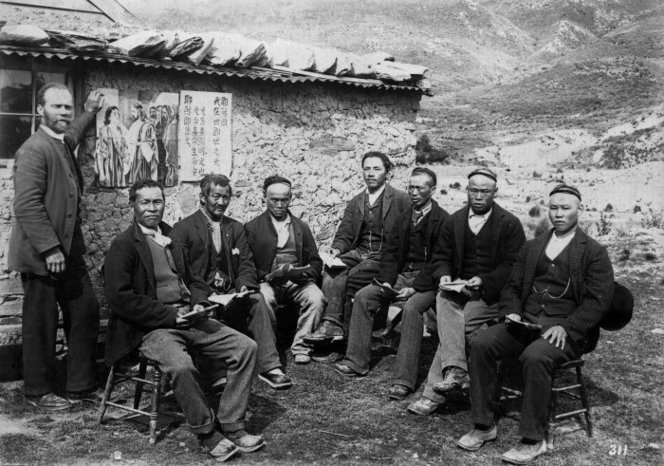
Chinese gold miners, with Mr Last in the middle, and Reverend Alexander Don on the far left, at the Kyeburn diggings circa 1900. Image courtesy of Te Puna Mātauranga o Aotearoa – National Library of New Zealand
Dunedin Chamber of Commerce
The Otago Goldfields attracted the first group of organised Chinese migrant workers. The Dunedin Chamber of Commerce (now the Otago Chamber of Commerce) recruited the workers when European miners left Otago to try their luck in the newly discovered West Coast goldfields. By late 1869, over 2,000 Chinese men had come to the land they would call the ‘New Gold Mountain.’
Many Chinese miners lived away from their European neighbours, without their families (who remained home in China) in extremely small, cramped and tiny cottages – no doubt a harsh existence during the freezing cold winters and scorching hot summers that Central Otago is renowned for. For more information on early Chinese migrants visit Te Ara – The Encyclopedia of New Zealand.
A fresh start
Immigration rules in New Zealand became more liberal in 1987, and new waves of Chinese migrants once again came to ‘New Gold Mountain,’ as their ancestors named New Zealand. Chinese migrants brought diverse skills and languages, and rich culture and traditions such as the lion dance and the lantern festival.
When the goldfields had been exhausted, many Chinese miners came to Dunedin to establish and run some of Otago’s early businesses. Their ancestors still call Dunedin home today.
A tale of two cities
In part due to the strong influence of Chinese in Otago’s history, the involvement of the local Chinese population and the wish to establish trusted business and trade opportunities Dunedin became sister city to Shanghai in October 1994.
The relationship is a driver behind Project Shanghai, a partnership of Dunedin businesses, educational institutions, the Otago Chamber of Commerce and the Dunedin City Council which aims to develop a broad range of links between the two cities.
A Dunedin Shanghai Association formed shortly after the relationship was formalised. The Association plays a key role in introducing and facilitating business, cultural, education and sports links between Dunedin groups and their Shanghai counterparts. It also hosts and facilitates a wide range of visitors and delegations from Shanghai. This role is reciprocated by the City of Shanghai in terms of visits to Shanghai by Dunedin delegations.
The Dunedin Chinese Garden
Once the sister city bonds had been formally recognised, talk began in 1998 of creating an authentic, traditional Chinese garden in Dunedin to recognise the contributions of the first Chinese people who came to Otago during the 1860’s and contributed so much both in commerce and culture over the years.
The Dunedin Chinese Garden’s design and construction was supervised and influenced by an architect from the Shanghai Construction and Decoration Company and the Shanghai Museum.
The Garden was pre-fabricated and assembled in Shanghai on a site identical in size and shape to that in Dunedin, then dismantled and transported here where it was reconstructed by artisans and supervisors from Shanghai.
The Dunedin Chinese Garden was blessed in June 2008, in the presence of Prime Minister Helen Clark and Chinese ambassador Zhang Yuanyuan and opened to the public on 8 June 2008. Prime Minister Clark returned to officially open the garden in September 2008.
Studying at the University of Otago
So, whilst the connections between China and Dunedin are historical and current, I am not Chinese – therefore I cannot give my perception on what it is like to live and study in Dunedin as a Chinese student at the University of Otago.
We caught up with Mike (Huang) Junjing who is here studying for a Bachelor of Physiotherapy (BPhty) to get his perspective as a Chinese student studying at the University of Otago and this video tells his story.
Take it away Mike…….
NB: The introduction is spoken in Chinese with Chinese subtitles, but the rest of the video is spoken in English with Chinese subtitles.
Nicky Richardson is an International Marketing Coordinator at the University of Otago. With degrees in music and marketing, she is a recent graduate of Otago herself – she loves Otago so much she ended up getting a job here!
5 things you might not know about the University of Otago….
As we rapidly approach 2019 and the University of Otago’s 150th birthday celebrations, it seems like a good opportunity to delve into the archives to find out some not so commonly known pieces of information about the university. I have asked around and here are 5 hidden gems that you might not know about the University of Otago.
Gargoyles or Grotesques?
Perched high above the Archway (which was once the formal entrance to the University) are a series of grotesques, each representing the various branches of learning available at the university at the time. They have been named gargoyles but the distinction lies between the fact that a gargoyle functions as a water spout to divert rain from the buildings, whereas a grotesque is purely decorative and involves either fanciful animal and human forms often distorted to be ugly and absurd.
Rumour has it that the grotesques were modelled on academic staff of the time……but that has never been confirmed. The man responsible for these unique little design elements was Edmund Anscombe (1874-1948), the university’s architect from around 1909 to 1929. While Fletcher Brothers won the tender to construct the Archway with a price of £10,292, the stonemason who carved the grotesques is unknown.
Otago’s oldest building
When you look at our gorgeous campus it is easy to assume that the oldest buildings are the old stone buildings in the centre of campus, but as the university expanded over time it began to acquire neighbouring properties which ranged from tiny cottages to larger homes.
Some were demolished, but some still survive, including what is widely deemed to hold the title of ‘oldest building on campus.’ Mellor House, one of the old Union Street houses which is now home to the Department of Psychology was originally built in 1862 for Thomas Calcutt, a printer who migrated from England to Otago in 1858.
Cry me a river……of tears
These beautiful black gates were originally the main entrance to the campus, as the entire campus was once contained within the ‘Quad’ which you can see immediately beyond the archway.
This stone corridor houses display boxes on the left which now contain information about events around the university, but their original purpose was for the public display of exam results. Hundreds would gather to view their results and many a tear was shed when the marks were not positive, hence the archway being coined ‘The Corridor of Tears’ or the ‘Tunnel of Tears.’
The archway links the Allen Hall building (completed 1914, it was originally the Students’ Union) to the former School of Mines building (completed 1909, which is currently home to the International Office and where I am writing this blog). The entire group of buildings was designed by Edmund Anscombe the architect for the majority of the University buildings from 1909 to 1927.
The original site of the Dunedin Botanic Gardens
The Water of Leith which runs through the university campus is not always this tranquil, and this was certainly the case when in February 1868 floods washed away bridges, and about an acre of gardens – at this point in history this site was home to the Dunedin Botanic Garden. This saw the Botanic Garden moved further north to their current site, and the university was able to purchase the land and develop it in the 1870’s. Some of the trees in front of the clocktower are indeed older than the buildings themselves as they are a reminder of the original inhabitants of this site.
Students have always pushed the boundaries
Each generation that passes seems to muse on the fact that the younger generations are less respectful, more verbal and opinionated and more willing to push the boundaries, but it appears that students, or indeed the younger generation have always held this inclination.
The image above was taken from the desktops of the oldest lecture theatres on campus – in both Geology and the clocktower. As you can see from the dates, some of this is very old indeed, with J.H. (John Harpur) Moir making his mark in 1886-1887. Mr Harpur graduated with a B.A in 1890 and became headmaster of Dunedin’s Normal School.
The full installation, complete with plaque now features on the south wall of the council chambers in the clocktower building, and it really is a remarkable and historical sight to see, some of the graffiti is embedded so deeply into the wood, it must have taken hours!
Nicky Richardson is an International Marketing Coordinator at the University of Otago. With degrees in music and marketing, she is a recent graduate of Otago herself – she loves Otago so much she ended up getting a job here!

